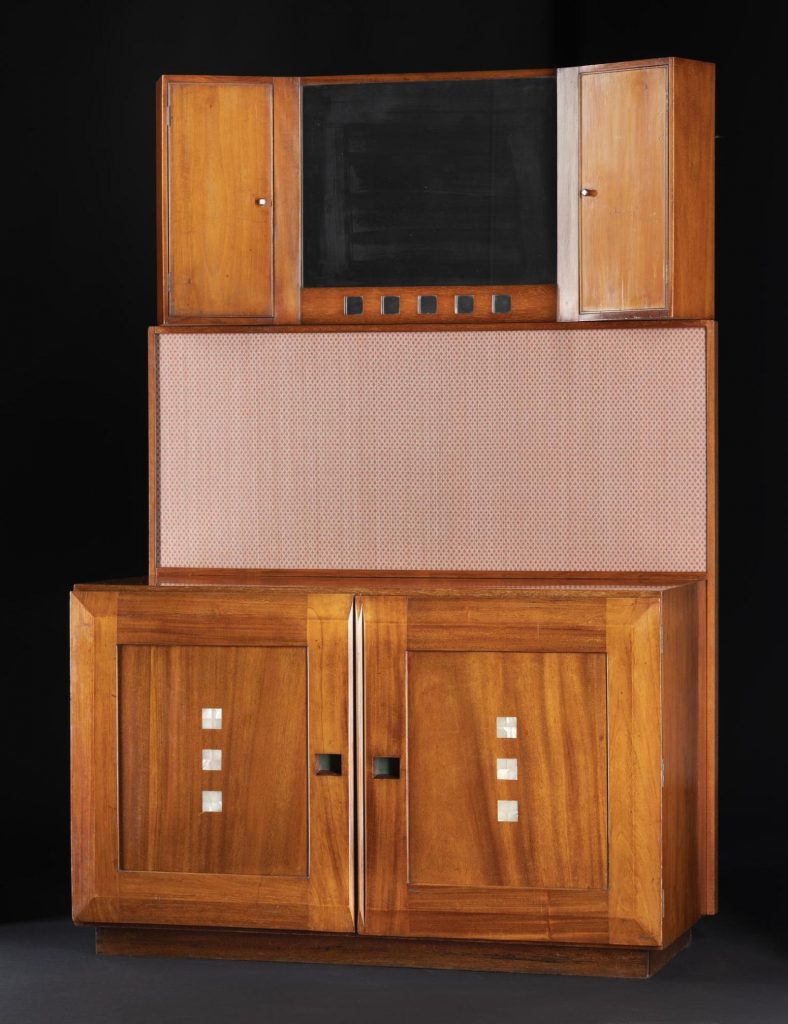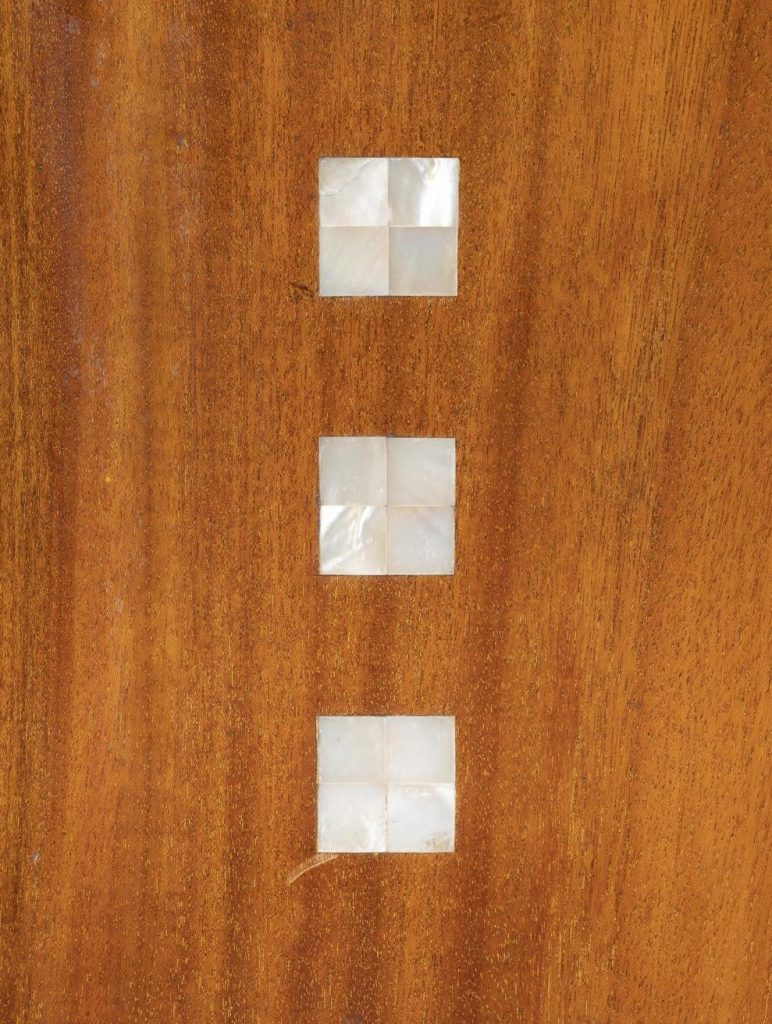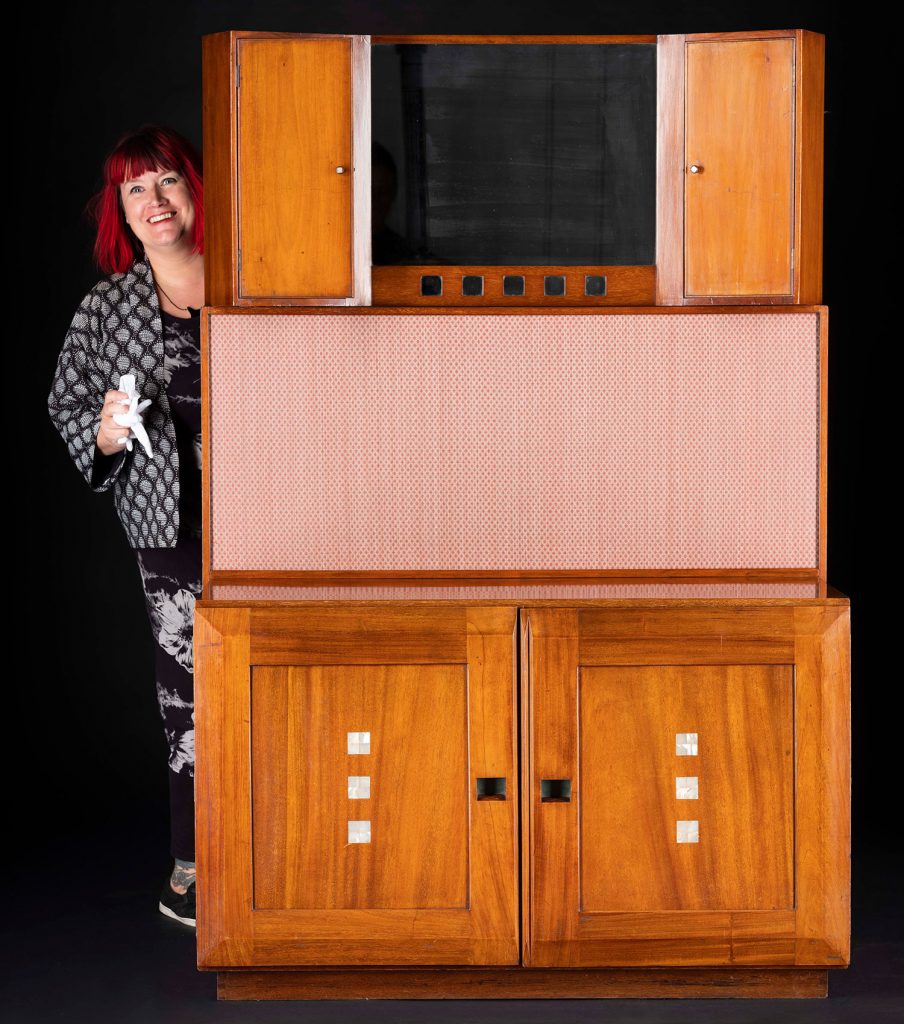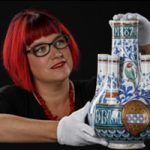This wash stand, designed by Charles Rennie Mackintosh, is a rare example of Mackintosh’s later work and was made by skilled ‘Enemy Alien’ cabinet-makers at the Knockaloe Internment Camp on the Isle of Man in 1917. It formed part of a bedroom set designed for a Mr Ling, who manufactured steel filing cabinets. It is based on a similar wash stand designed in 1916 for the guest bedroom of 78 Derngate Northampton, the home of Mackintosh’s patron WJ Bassett-Lowke.

The Knockaloe camp was set up in November 1914, and adult male German, Austro-Hungarian and Turkish civilians in Britain, known as ‘enemy aliens’, were interned there during the First World War. It is estimated that, between 1914 and 1919, more than 32,000 foreign citizens were interned in Britain. Although the internments were organised by the government, they were implemented as a result of public pressure, which, particularly in 1914-15, resulted in a wave of xenophobic protests and violence being committed against Turkish, German and Austro-Hungarian businesses, homes and individuals in Britain, culminating in the ‘Lusitania Riots’ of May 1915. The protests and violence were fuelled by what became known as ‘spy fever’— a fear amongst the general population that all of these civilians were, in fact, enemy spies. Although many of the men were rounded up by the British authorities, a number turned themselves in for their own safety.
The Knockaloe Camp on the Isle of Man was first opened on 17 November 1914 and was originally only designed for 5000 people, although by the end of the war, there were around 23,000 men interned there. The celebrated Manx designer Archibald Knox was a civilian parcel censor at the camp. During the five years that the camp was open, various workshops were set up by the Friends Emergency Committee, a humanitarian arm of the Religious Society of Friends (Quakers). The workshops aimed to help internees pass the time and learn new skills, and images in the Manx Museum archive show that they included textile weaving, bone carving, basket weaving, printmaking, woodwork and furniture making.
A number of the internees were skilled cabinet makers, and it seems likely that many of these worked in the furniture workshop where the Mackintosh furniture was made. The chief cabinet maker in charge of the workshop was Mr Charles Matt, an internee who had previously managed a workshop of 80 men in a furniture factory in London. A circa 1917 photograph in the Manx Museum shows items of Mackintosh furniture, including an example of the wash stand, at the camp, and it is believed that all of the sets of this furniture were made in the camp as the quality of all of the known pieces is exceptional.


No correspondence exists as to exactly why Mackintosh chose to have the furniture made in the Knockaloe Camp, but it seems that cost and practicality would have been the driving force behind this decision. With so many men away at war, skilled cabinet makers were in very short supply in Britain, and Knockaloe was able to provide skilled workers at, no doubt, a somewhat reduced price.
Although the persecution and internment of civilians during the First World War is not an episode in British History to be proud of, the story of the Knockaloe Camp does, however, tell us much about the resilience of people, and of the creative spirit in times of trauma and adversity.
The washstand is now on permanent display in the Design for Living gallery at the National Museum of Scotland to mark the 150th anniversary of Mackintosh’s birth, on 7 June 1868.
